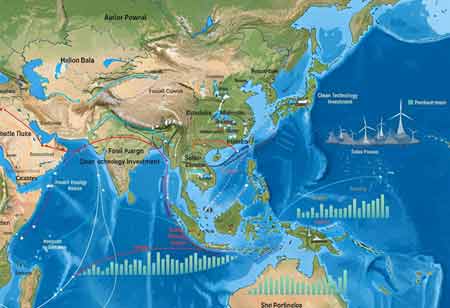Thank you for Subscribing to Energy Business Review Weekly Brief
The APAC Region's Role in Global Clean Energy Leadership
The Asia-Pacific region is leading the global clean energy transition, driven by rising energy demands, increasing climate awareness, and strategic energy security concerns, influenced by geopolitical forces and national policies.

By
Energy Business Review | Friday, September 05, 2025
Stay ahead of the industry with exclusive feature stories on the top companies, expert insights and the latest news delivered straight to your inbox. Subscribe today.
Fremont, CA: The Asia-Pacific (APAC) region stands at the forefront of the global clean energy transition. Driven by burgeoning energy demands, growing climate awareness, and a strategic imperative for energy security, the APAC region is witnessing an unprecedented surge in clean technology adoption and investment. However, this landscape is profoundly shaped by complex geopolitical forces and national policies, which act as both catalysts and constraints for global investment.
APAC's Clean Energy Boom: A Geopolitical Imperative
The region plays a pivotal role in the global energy transition due to its sheer scale and growing energy demand. Energy security has emerged as a key motivator, with geopolitical instability—particularly in regions rich in fossil fuels—highlighting the vulnerabilities associated with dependence on imported fuels. Transitioning to domestically sourced renewable energy enhances both energy independence and system resilience. Economic competitiveness is also a significant factor. The rapid decline in the cost of renewable technologies, especially solar and wind, has made them more economically viable than many fossil fuel alternatives. Major economies such as China and India are capitalizing on this cost advantage to scale up domestic deployment while positioning themselves as global leaders in clean technology manufacturing.
Firm climate commitments are shaping the region’s energy landscape. Most APAC governments have adopted ambitious net-zero targets and implemented supportive policy mechanisms—including renewable portfolio standards (RPS), feed-in tariffs (FiTs), and competitive project auctions. As a result, several markets are on track to generate 30–50 percent of their electricity from renewable sources by 2030.
The region is a hub of technological innovation. China leads in solar panel and battery production, while Japan and South Korea are at the forefront of green hydrogen development. Companies across APAC are also advancing breakthroughs in areas such as fusion energy, battery-swapping networks, AI-driven cleantech solutions, and the development of critical materials—all of which are essential to accelerating the global clean energy transition.
Policy as a Geopolitical Lever: Shaping Investment Flows
Government policies play a significant role in shaping clean tech investment in the Asia-Pacific region. Countries like China and India have ambitious policies to stimulate clean technology, with China's 14th Five-Year Plan targeting renewable energy and India's production-linked incentive schemes boosting local manufacturing and employment. The race to secure critical minerals, such as lithium, cobalt, and rare earth elements, has introduced new geopolitical flashpoints. Regional collaboration, such as Japan and South Korea, is emerging as a counterbalancing force.
The geopolitics of energy in APAC is an interplay of national interests, economic competitiveness, climate imperatives, and technological innovation. Government policies are not merely regulatory frameworks but powerful instruments that dictate the flow of global investment in clean tech, influencing everything from manufacturing hubs and supply chain resilience to the pace and trajectory of the region's energy transition. Navigating this intricate geopolitical landscape will be crucial for investors, policymakers, and businesses seeking to capitalize on the immense clean energy potential of the region.






